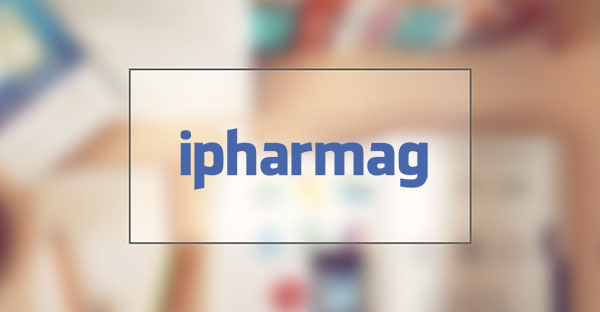With the growing adoption of new digital technologies to improve patient care, comes the need to demonstrate their benefits to all stakeholders, including payers.
Showing that patients and HCPs understand, can use and benefit from digital elements is an important but arguably under addressed aspect of securing reimbursement for them. By putting patients at the heart of everything the company does, they are more likely to feel engaged and inspired to embrace new technologies, give themselves an injection or use an app, even if they are not digitally savvy.
“Patients that are informed and engaged are more adherent to their medicines,” says Lori Hall, director of global health literacy at Eli Lilly and Company. “And greater adherence leads to better outcomes. This is a universal goal for payers, HCPs, patients and pharma alike.”
 Not taking the time to test that the supplemental information around digital health apps is easy to understand and easy to use by the intended patients, on the other hand, will mean new digital health technologies have little chance of success, says Hall.
Not taking the time to test that the supplemental information around digital health apps is easy to understand and easy to use by the intended patients, on the other hand, will mean new digital health technologies have little chance of success, says Hall.
“All too often the industry assumes patients understand the information we provide about what is required of a new medicine or a digital add-on. Yet the readability of those documents often test far above the health literacy skills of the average patient. This communication gap is an under-addressed area that is hiding in plain sight.”
Testing assumptions
Hall cites an early pilot Lilly did to test established health literacy principles applied to an existing patient-facing document, which had been previously created by a trusted consumer agency, among patient populations. “It blew a lot of our assumptions out of the water,” she says. “What we thought was health literate in the original text did really poorly using the validated scoring tool. The new version of the document tested better scoring at the superior level.”
The experiment led to new content being created, which was ultimately used by payers with their patient populations. “This was not required by any legal or regulatory body,” she adds. “This was something we did because we wanted to understand and meet patients where they were at. But it led to payers saying ‘yes’ more quickly because our qualitative and quantitative health literacy testing results superseded their own quality review processes.”
The same procedure should be applied to getting reimbursement for digital apps and add-ons, says Hall. “We know a lot about patients but we can never know for sure their levels of health literacy, the context in which they are searching for health information, their levels of stress and anxiety in a particular moment or where they might get stuck, confused or overwhelmed. So if we optimize our content and digital products for the patients who are likely to struggle the most, we improve the experience for everyone.”
Early patient engagement
For Jesper Bjerggren, European Market Access Lead, Digital Health at Teva Pharmaceuticals, ensuring patients understand and have the capabilities to use digital  elements should be taken care of very early in their development process, rather than in post-hoc education drives once a digital product has been completed.
elements should be taken care of very early in their development process, rather than in post-hoc education drives once a digital product has been completed.
“There shouldn’t really be any need to specifically educate patients on the value of digital add-ons,” says Bjerggren, “because the intervention should be based on a deep insight and collaboration with these stakeholders at an early stage of the treatment pathway.
There might however be a need to enhance patient health literacy to be able to manage appropriately the information that they will receive. Indeed if digital add-ons should be somehow intuitive, digital health will bring a new interactive way for both patients and their healthcare professionals to manage health conditions.
“We absolute don’t want an engineer sitting in her ivory tower making great solutions that might looks nice and work perfectly but are made independently of patient needs. The main question is: does the patient need it? We need to know the issue we need to solve by engaging with patients and HCPs from the outset. They need to be on the journey from the beginning.”
But there is much to consider when therapies combine the chemical and the digital.
 The complexities of the task at hand are clear to Søren Smed Østergaard, Novo Nordisk’s Vice President of digital health. “Digitalising healthcare is something that’s going to take time,” he says. “because we have to ensure patient safety before everything, but we believe we have found a digital mode of action that actually delivers much better outcomes that can lead to cost-savings for payers.”
The complexities of the task at hand are clear to Søren Smed Østergaard, Novo Nordisk’s Vice President of digital health. “Digitalising healthcare is something that’s going to take time,” he says. “because we have to ensure patient safety before everything, but we believe we have found a digital mode of action that actually delivers much better outcomes that can lead to cost-savings for payers.”
Better patient/physician conversations
Novo Nordisk has learned much from piloting its NovoPen® 6 smart insulin pen, which collects and stores data on the date and time of insulin injections and the number of units administered. This data is then downloaded using near field connectivity to a database, allowing HCPs and patients to look at injection data together when discussing insulin treatment.
The advantages to payers are clear, he says, “Our pilot demonstrated that if we collected the data, if the conversation between the patient and the physician was around actual behaviour, then the improved outcomes are projected to save the healthcare system in Sweden eleven thousand euros per patient over a patient’s lifetime.”
This underlines the clear benefit of digital patient education but doing so safely and appropriately was far from straightforward.
Integrating digital solutions with systems that patients were already using was key in order to minimise the change required and to give patients a choice, says Smed Østergaard. “We recognised that we needed to make the barrier to moving over to digital as small as possible by integrating into the solutions that people already had a preference for. We partnered with companies active in this space – Abbott, Dexcom, Medtronic, Glooko, mySugr to name but a few – and we moved the more digitally savvy patients that were already using these systems onto the pilot.”
Training patients to use the app and getting their feedback to enable iterative refinement of the solution was a key part of the trial, which also raised unforeseen issues. “We learnt that to get patient consent in the app we had to make sure that people understood how to use the ‘accept’ and ‘reject’ buttons and for what purpose.
Minimising risk
“That iterative process was quite long. We looked at whether they intuitively understood, or whether a misunderstanding was leading them to taking too much insulin or too little. We therefore iteratively designed the digital solutions to minimise the risk of people being able to do something wrong.”
Novo Nordisk also embedded step-by-step instructions and video guidance into its solution based on research into what people found most difficult. “A practical example,” says Smed Østergaard, “is when a patient inputs their blood sugar level, for example 5.8 mmol/L, it matters how their phone is set up as to whether they should use a comma or a dot between the 5 and the 8 and how it will be interpreted.
“This could lead to disastrous outcomes handled incorrectly because if that figure is then used to display information on what they need to do next, it has to be right. So we have had to build a logic in so people cannot do it wrong. If they enter wrong information in a particular field, they are informed about it and cannot progress in the app before it has been corrected.”
As Novo Nordisk’s experience makes clear, ensuring digital literacy can be complex, but achieving it can give patients the confidence to safely and effectively use digital solutions and payers the data and the confidence they need to re-imburse.
And the great thing about health literacy is that it resides in the pre-competitive or non-competitive space, so it is an issue upon which the industry can collaborate, says Hall. Lilly is part of a small consortium of four pharma companies working to better integrate health literacy across the pharma world. “A rising tide lifts all boats. This is something we can share with the whole industry.”
Laying a regulatory path to reimbursement for digital
It is not just the patients pharma must think of when it comes to ensuring digital literacy on the path to reimbursement. It must also reckon with regulators’ role here too.
The absence of a designated pathway for value-added medicines, such as combining known molecules with digital technologies, discourages development and acts to the detriment of patients and HCPs.
Medicines for Europe’s call for a ‘fit for purpose regulatory framework’ that will enable clarity in early development is one step forward here. “This is an emerging field and, in my view, there has to be some kind of framework,” says Bjerggren. “We need to find some common ground with payers on what kind of evidence needs to be brought to the table.”
Bjerggren points to Germany as the pathfinder here. Its 2019 Digital Health Care Act (Digitale-Versorgung-Gesetz or DVG) allows digital add-ons or apps to be fast-tracked to market and placed on a central registry. New technologies must demonstrate positive benefit – such as increased patient adherence – within 12 months of registration.
Germany has mandated that all insurers must reimburse for these registered technologies. There are currently 50 digital health apps in Germany’s fast-track process and hundreds more in the pipeline.
Bjerggren says this model, which provides an early experience programme, followed by a collaborative examination of value with concurrent pricing and reimbursement, makes sense. A review after a year or two serves to assess whether endpoints relevant for the pricing agreed have been achieved or not, which in turn determines whether reimbursement is sustained or even increased.
And by definition such a process demonstrates that the stakeholders who matter – patients and HCPs – will have understood and used the digital product as intended. A win, then, for all.
Related Content: Including the caregiver in access submissions Primary Event: Pharma & Patient USAPrécis: Convincing payers of the value of digital add-ons and of drug/device combinations requires pharma to demonstrate that patients and other stakeholders understand how to use themPremium`: Freemium`: Channels: Access and EvidenceTags: digitalOriginal Article
Primary Event: Pharma & Patient USAPrécis: Convincing payers of the value of digital add-ons and of drug/device combinations requires pharma to demonstrate that patients and other stakeholders understand how to use themPremium`: Freemium`: Channels: Access and EvidenceTags: digitalOriginal Article

